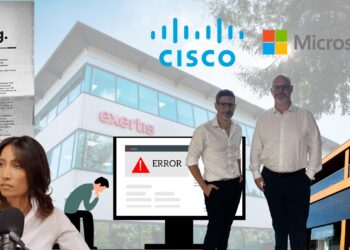Some of the world’s largest telecoms companies, including BT, Vodafone, Deutsche Telekom and Telefonica, have banded together to issue a “call to action” on reducing their scope 3 emissions.
The Joint Alliance for CSR (JAC), which is made up of 26 leading telecoms players, claims that 93% of its members have committed to net zero or science-based commitments (based on a recent survey of its members). This compares with just 43% of Forbes 2000 members.
These 26 firms are now seeking reductions in emissions across the entire value chain in recognition that most of their carbon footprint lies outside of their direct control.
Linking arms across the telecoms sector and value chain is “vital to bringing a net-zero future into being”, Dr Carlo Drauth, Chair of JAC Climate Change Workstream & Head – Sustainability and Responsible Business, Telefónica, said.
“As an industry, we have already set ambitious targets and taken concrete measures to reduce our emissions and mitigate climate change,” he stated.
‘However, most of our carbon footprint lies beyond our direct operations. Our supply chain is a significant contributor to emissions, and to achieve our targets, we must work together to reduce our collective carbon footprint.”
Just 31% of the world’s largest 2,000 companies have set a scope 3 emissions targets. By contrast, 85% of JAC members have scope 3 reduction targets in place, its survey found.
JAC was created by Deutsche Telecom, Orange and Telecom Italia in 2010.
JAC’s 10 best practices for decarbonisation for the supply chain
– Understand your carbon footprint – assess emissions from operations, energy use, and the value chain.
– Develop a carbon reduction plan – set a Net Zero Goal with interim targets and board oversight.
– Align carbon reduction to SBTi standard – establish valid, science-based Scope 1, 2, and 3 targets.
– Analyse supply chain emissions – prioritise areas with significant carbon footprints.
– Maintain LCAs for your products/services – identify major decarbonization opportunities.
– Report emissions reduction activities – use recognized standards like the GHG protocol and ensure external verification.
– Use green energy as available – a simple and effective emission reduction strategy.
– Set power efficiency goals – incentivize employees to improve product and operational efficiency.
– Support your customers’ carbon reduction goals – understand and align with them.
– Engage the supply chain – encourage and help them to reduce their carbon emissions.
















